My kids are now both in elementary school and we had an avalanche of art and papers arrive home at the end of the school year. Since our space is a little limited in the apartment, I needed to get on top of all the paper fast! It doesn't take long for things to get chaotic and messy around here.
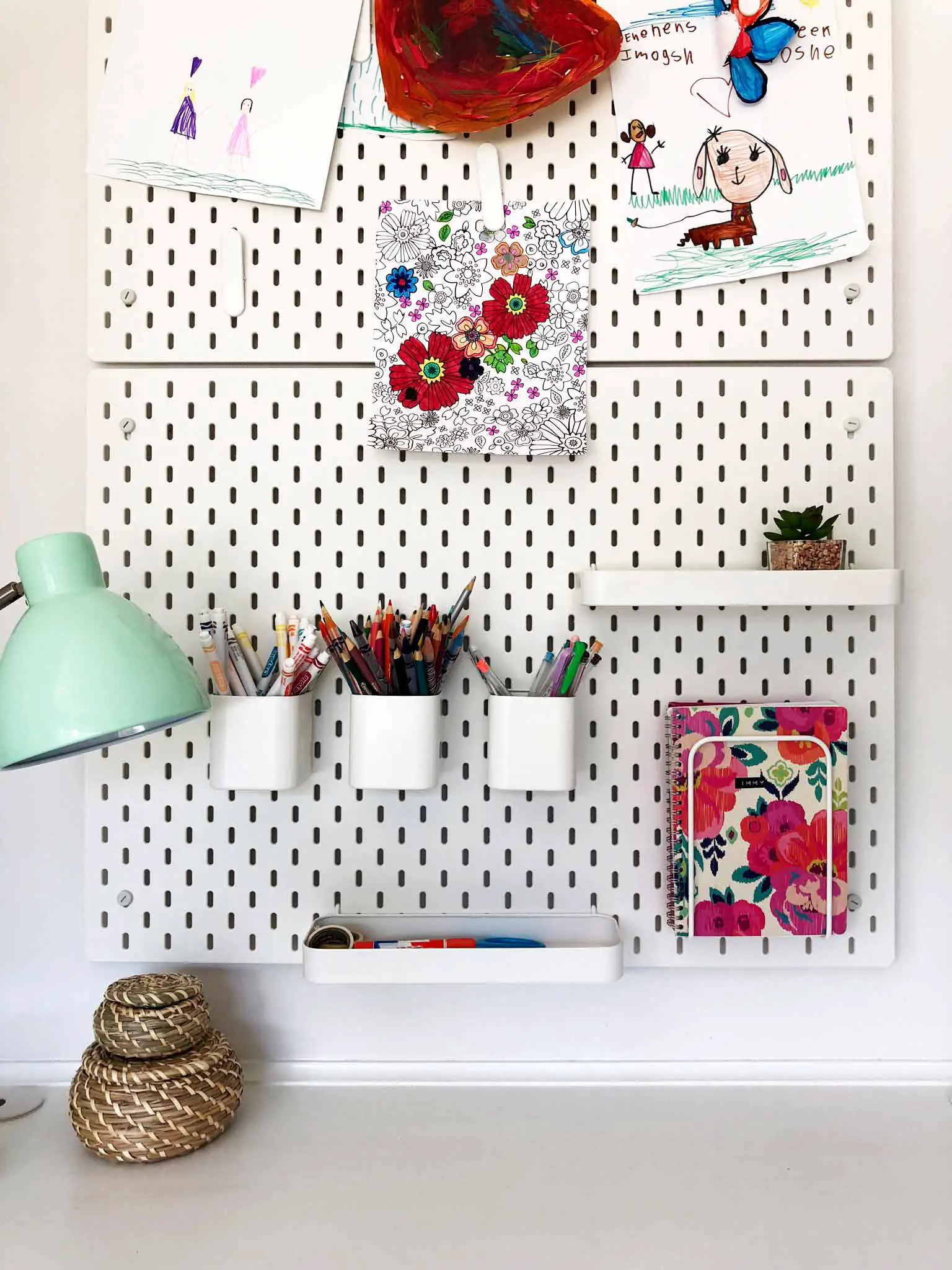
A few years ago as my eldest was going into kindergarten, I wrote about a system I'd put in place for organizing and storing her artwork. I still use a similar process, but the details have been tweaked a bit over the years, so I thought I'd share a follow-up on what's working for us right now.
First off, why would you need a system to organize kids artwork?
Here are my reasons. A system helps me...
- manage paper clutter and keep our home streamlined
- enjoy the artwork they are proud of
- archive mementos for the future
To recap, here's the system of organizing kids art that I shared in the original post:
STEP ONE: UNLOAD
Designate a spot in your home to set down art/papers until you're ready to sort through them eg. a drawer, a basket near the door. This avoids piles of paper building up in places you don't want it to.
STEP TWO: SORT
Decide what to keep and what to recycle. Less is usually more in this case!
STEP THREE: DISPLAY
Find a place in your home to showcase some of their work.
STEP FOUR: ARCHIVE
File away the favorites—either physically in a portfolio/box or digitally.
First off, I'll say that Step One is just not happening here in the apartment—there isn't much of an entryway here so everything just gets dumped on the floor until we sort through it. It is what it is! The good thing is that it is very motivating to go through papers quickly since we are tripping over piles if we don't! The girls do have a dresser in their room which is almost entirely full of paper. Designating a home for all their drawings and creations keeps it a little more manageable.
Related: How I Gave This Neglected Pine Dresser a New Lease on Life
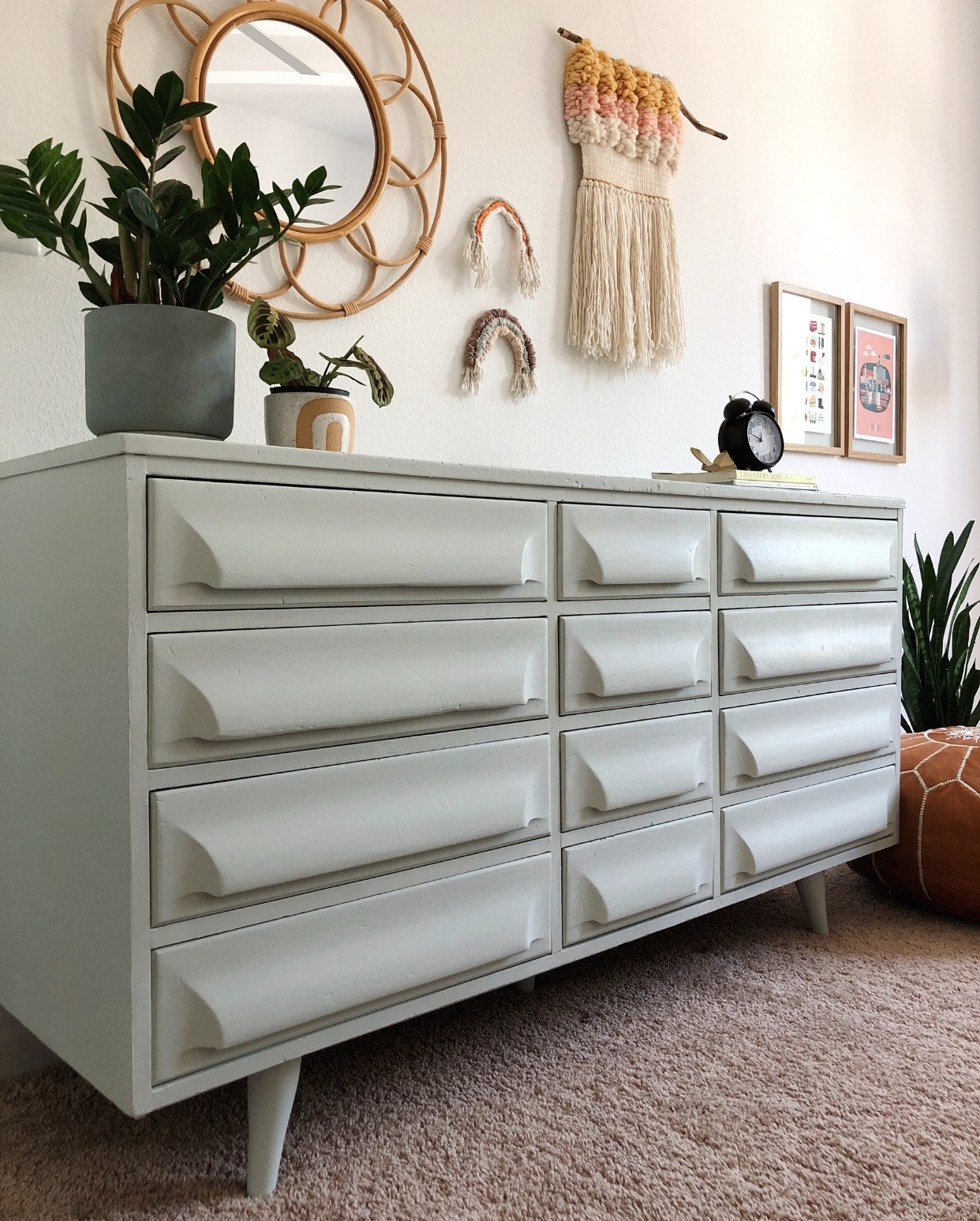
The sorting stage is the same as before. I recycle probably 90% of what they create, because my kids draw/write a lot. A LOT. Sometimes I have to be sneaky because it is all equally precious to them, but they hardly ever ask after a missing piece of paper. I am beginning to involve them more with this stage, so that they can get into a habit of letting stuff go and holding onto things they truly love.
After we've decided on the keepers, these days I jump to Step Four (archive) and snap photos of their art to add to a shared album on my phone. This is a little different to how I used to archive their work—during our Konmari purge I realized that I didn't really like the big bulky portfolios of art, and it definitely didn't spark much joy to have to glue it all in the folders several times a year. I took photos of everything in the portfolios and threw it all away. And it felt SO good. Some day I plan on creating books from these photos, but it's not a priority right now. The most important thing is documenting it digitally so that it's there for me when I'm ready to take on a project.
Related: KonMari Part One: 10 Tips to Prepare You for KonMari Success
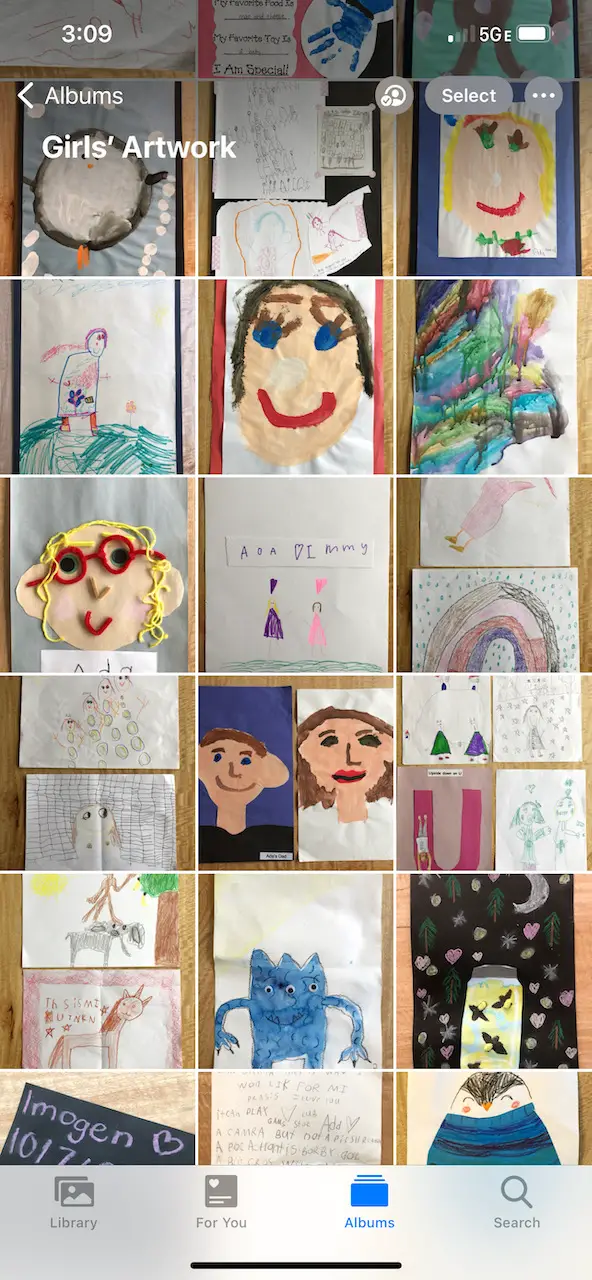
I do keep some physical papers such as handmade cards and notes, but I'm pretty selective about what I want to hold onto. Each member of our family has a box designated for these kind of items.
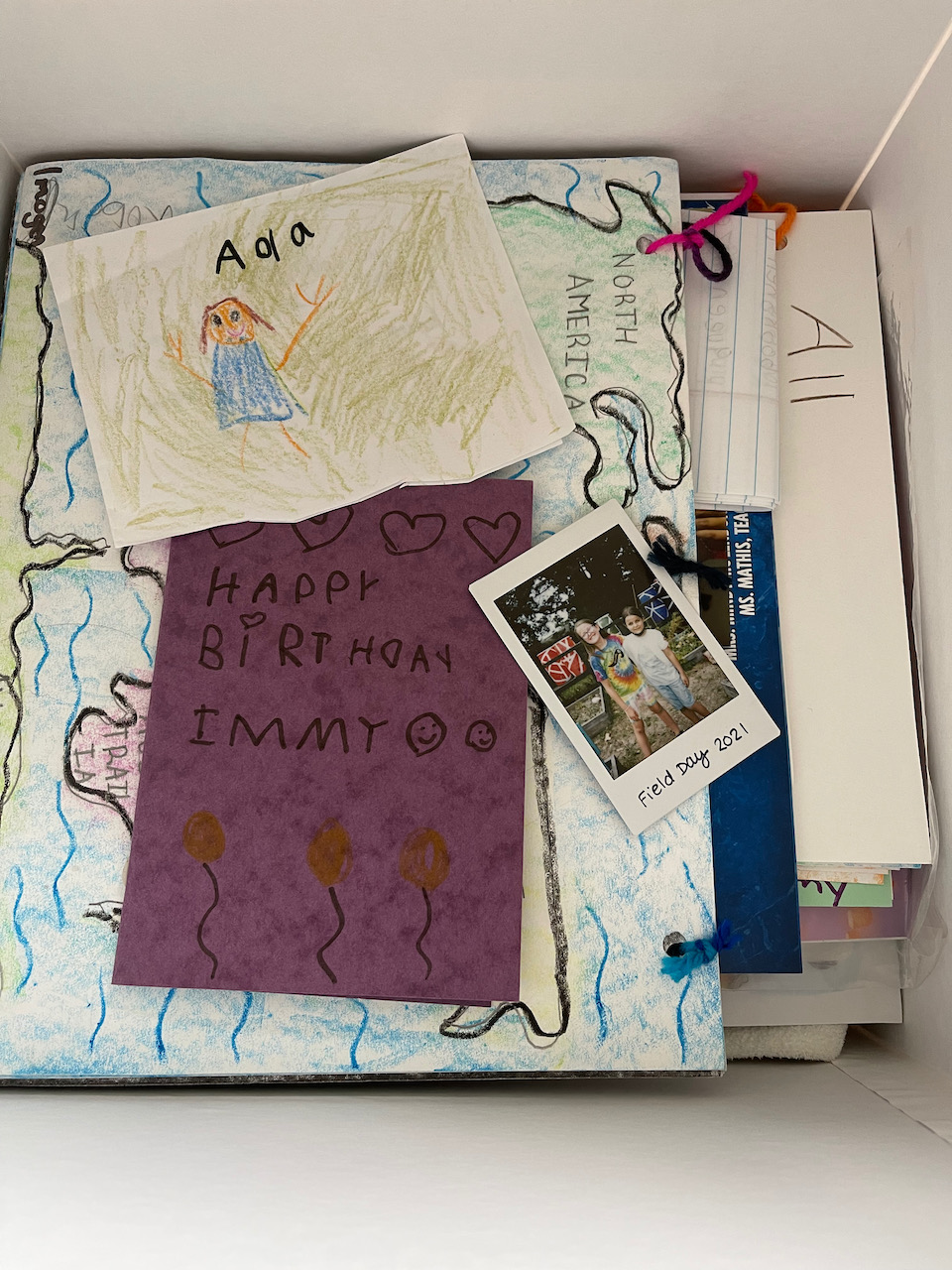
Once I have everything documented digitally, we display some favorite art pieces. Up until recently, this was on our fridge, but we started taping their art up in their closet/"playroom" and it's working out really well! It's nice to limit the visual clutter on the fridge since our apartment is open plan, and there is also a lot more wall space in their closet. We'll leave them taped up until we need the space to rotate in new pieces.
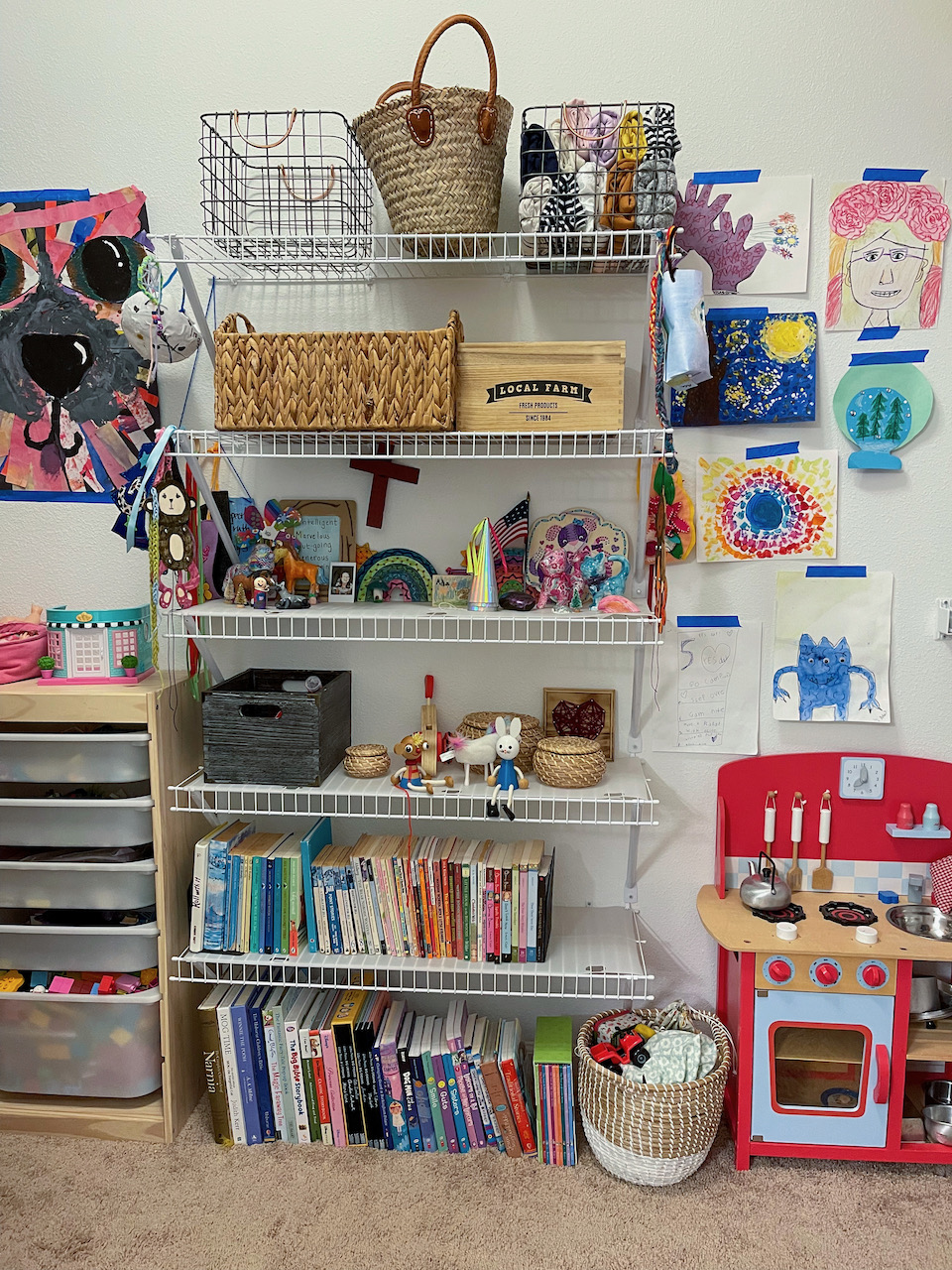
Overall, the system is very similar to the one I was using a few years ago and the sentiment is the same: sorting through the paper before they turn into permanent piles, finding a spot to display art, and choosing what to keep as a memento to look back on.
I hope this is helpful if you are feeling overwhelmed by kids papers—I find that a system helps take the emotion out of it and it definitely gets easier with time!